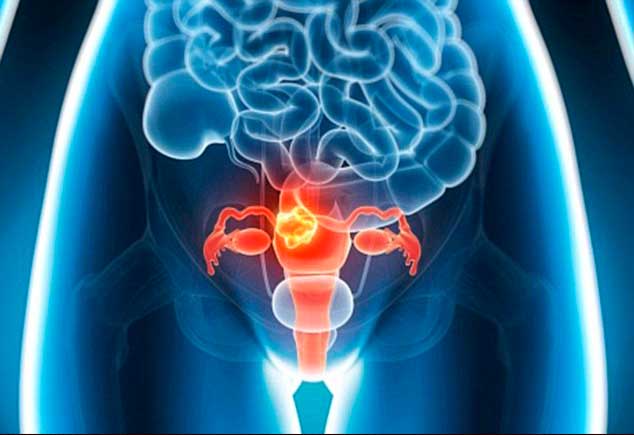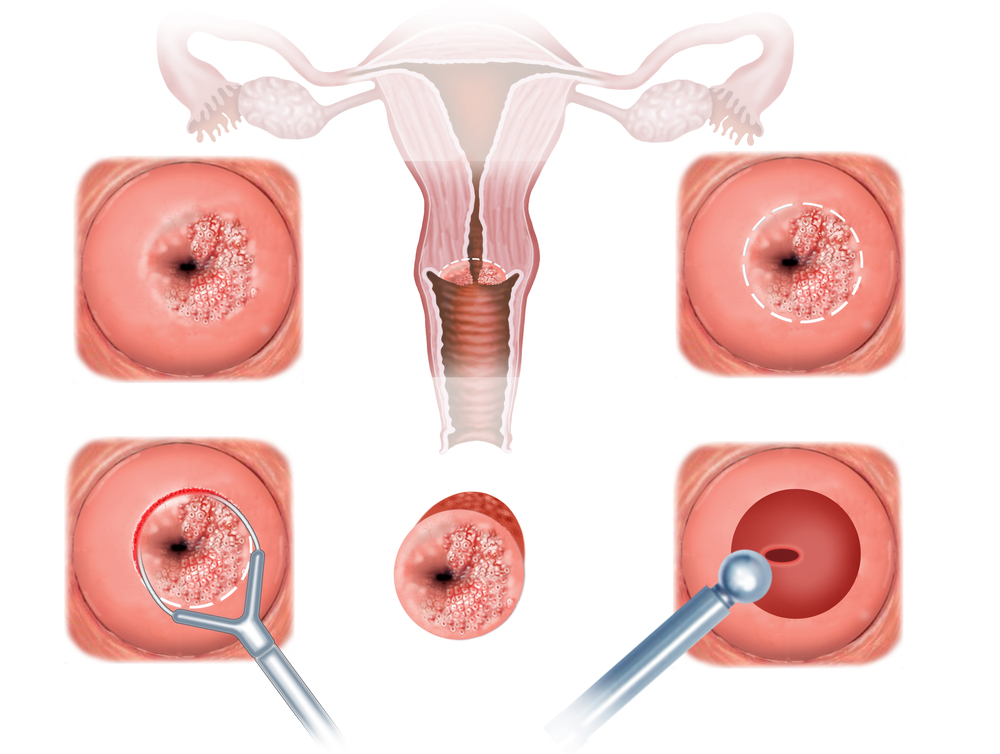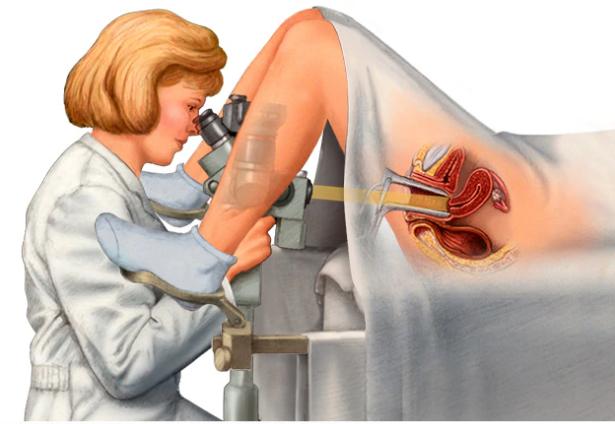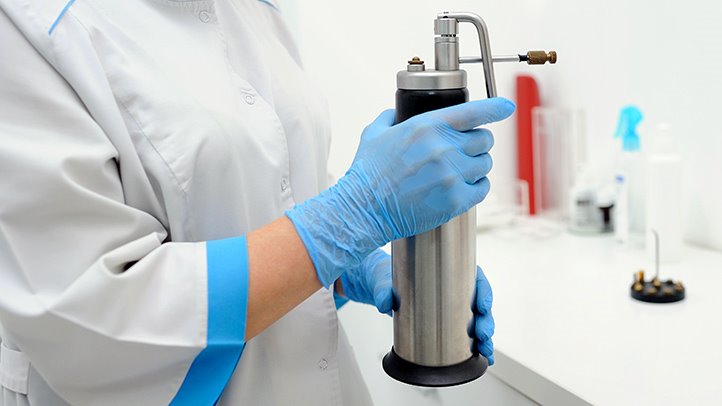Today, many women of different childbearing age are diagnosed with uterine dysplasia. What it is? Dysplasia refers to abnormal changes in the epithelium in the vaginal area of the uterus. This defect belongs to the category of precancerous diseases. In the early stages, dysplasia is completely reversible, so its timely detection and treatment is the only sure way to prevent the development of oncology.
In contrast to the erosion that is now widespread, which appear against the background of mechanical damage, with dysplasia, the lesion covers the tissues lining the cervix. Most often, women aged 25-35 years are exposed to this pathology. Due to the lack of a pronounced clinical picture with cervical dysplasia of the 1st degree, the main role in the diagnosis is played by instrumental and laboratory methods. Although often pathology is detected completely by accident, during a routine examination on a gynecological chair.
Uterine dysplasia: what is it?
This pathology is an abnormal condition of the epithelium that strengthens the female reproductive organs, which is characterized by a sharp change in the number of layers and the structure of cells. The basal membrane and upper structures are not involved in this process. Dysplasia is a pathology that, under the influence of certain factors, can cause the onset of a dangerous tumor.
According to statistics, this disease is the most common precancerous form that can change the structure of the mucous membranes of the vagina and cervix. Its etiology can be different, but pathology absolutely always entails a violation of epithelial cells. It covers not only the upper integument, but penetrates into the deeper layers.

Dysplasia is often called erosion, but in fact this term does not fully correspond to reality. The main difference between these pathologies lies in the fact that the latter appears due to mechanical injury to the tissues, and the precancerous lesion is characterized by a violation of the cellular structure.
Forms of the disease and its features
Given the depth of damage to the uterine mucosa, doctors distinguish several types of pathology:
- A poorly expressed variety in which about a third of the squamous epithelium is injured is uterine dysplasia of the 1st degree.
- The average form, which is characterized by the defeat of most of the epithelial cells, is stage 2.
- Heavy type, in which all layers are affected - 3 degree.
Each year, approximately 40 million women are first or ever re-diagnosed with uterine dysplasia on the planet. What is this and what symptoms of this disease, unfortunately, many women know firsthand. This defect is about 16-18% of all diagnosed cervical malformations. Most often, women with childbearing age of 30-35 years old face this diagnosis. According to medical studies, dysplasia becomes cancerous in about 20-30% of all cases. Usually, this is characteristic of severe forms of the disease.
Most women, not knowing what it is uterine dysplasia, and not fully understanding the essence of abnormal mechanisms, confuse this pathology with simple erosion or a tumor. Although in reality neither one nor the other is true. And in order to understand what the difference is, you should get acquainted with the features of dysplasia and its course.
Causes
The occurrence and development of uterine dysplasia, like any other precancerous pathology, does not occur under the influence of any one factor. In all cases, the cause of the disease is a whole combination of many different provocative conditions.
The main prerequisites for the development of dysplasia are:
- infection with some papilloma viruses;
- prolonged use of hormonal oral contraceptives (more than 5 years);
- too early onset of sexual activity (in the region of 13-15 years);
- many sexual partners;
- all kinds of bad habits, most often smoking.

Among other things, a certain contribution to the development of the disease can bring such conditions:
- monotonous diet deficient in vitamins A and C;
- weakened immunity;
- genetic predisposition to cancer;
- the presence of genital infections;
- antisocial behavior;
- frequent childbirth.
The identification of the leading position of the HPV virus in the onset of dysplasia and malignant neoplasms of the cervix uteri was a real breakthrough in determining effective methods of combating cancer of the female reproductive system.
Clinical picture
According to numerous reviews, cervical dysplasia in the initial stages is almost asymptomatic, which, of course, complicates the diagnosis. Pathology declares itself only in neglected forms: a woman has regular pains in the lower abdomen, there are abundant spotting between menstruation. To avoid such phenomena and start treatment in time, you should regularly visit a gynecologist and undergo appropriate examinations. In addition, it is imperative to resort to all the necessary clinical, instrumental and laboratory studies.
Usually, signs of uterine dysplasia appear only when the pathology is accompanied by other problems. So, according to doctors, this defect is usually accompanied by erosion. That is why experienced gynecologists necessarily send their patients to the analysis of PAP when they identify similar anomalies.
Clinical manifestations of any degree of uterine dysplasia can be:
- plentiful milk excretion without any smell;
- spotting from the vagina after intimacy;
- soreness of sexual contacts.

It is worth mentioning once again that the described symptoms are not specific and cannot become the basis for the diagnosis of cervical dysplasia. Such signs can only remind a woman that her reproductive system needs a thorough examination.
A detailed description of the degrees of uterine dysplasia
Like any other disease, this pathology also has several stages of development. As already mentioned, depending on the vastness of the affected area of the epithelium, doctors distinguish 3 degrees of uterine dysplasia. The treatment of a disease largely depends on its form, therefore, determining the stage at the stage of diagnosis is extremely important.
The possible consequences of dysplasia are completely determined by its degree. So, a mild form of pathology in most cases is easily treatable and passes on its own after stopping the virus. In 9 out of 10 healthy women, pathogenic microflora ceases to be detected in the test results about six months after penetration into the body. Indeed, during this time, immunity gradually destroys viral elements without outside help.
It is noteworthy that in 32% of all cases of the disease, its prolonged course of progress and regression is observed. In 11% of women there is a smooth transition of the 1st degree of cervical dysplasia into the second.

The average form of pathology in 43% of cases also disappears on its own after relief of HPV. In 35% of patients, a prolonged course of cervical dysplasia of the 2nd degree is observed without any changes. According to statistics, in 70% of women, recovery occurs approximately 2 years after diagnosis. 22% of patients face a transition of 2 degrees of cervical dysplasia into the 3rd.
A severe form often degenerates into cancer.
Dysplasia and pregnancy
This disease is not a contraindication to bearing a child for women who were diagnosed already in the period of fetal formation. The presence of an abnormal process in the tissues of the uterus does not affect the development of the embryo, does not inhibit the work of the placenta. At the same time, the pregnancy itself does not affect the detected dysplasia, without worsening its course and not contributing to its transition to cancer.
In addition, women should know that under the influence of hormones produced in the body of the expectant mother, changes can occur in the cervix that often mimic dysplasia. It can be an ectrapion, which is characterized by a shift in the cells of the cervical canal towards the vagina. On examination, such an anomaly looks like a red corolla.
So, if a woman was examined for 1-3 years before conception and received a negative result of a cytological analysis, then a second procedure is not prescribed. If the expectant mother has never undergone such studies, taking a Pap smear is recommended at any time. If the result of this analysis is positive and the first degree of dysplasia is diagnosed, then the patient is prescribed colposcopy and a follow-up examination one year after delivery.

In case of suspicion of a severe form of pathology, a biopsy is performed. If the result of the analysis confirms the diagnosis, a woman is prescribed colposcopy every 3 months until the very birth.
Diagnostics
Since dysplasia can degenerate into a tumor under the influence of various factors, timely detection of the defect plays the main role in the prevention of complications. All women over the age of 20 who are sexually active must undergo a gynecological examination at least once a year. In addition, the passage of a cytological examination is shown once every 3 years.
In the diagnosis of uterine dysplasia, several popular methods are used:
- simple inspection by a specialist;
- colposcopy;
- cytological analysis;
- targeted biopsy.

It is noteworthy that the sensitivity of the methods is significantly increased with an increase in the degree of the disease itself.
Mild treatment
At the initial stage, doctors do not recommend conducting therapy at all. After all, the body independently fights the disease and, usually, the defect disappears on its own, without the use of medications.
If 1 degree of dysplasia is detected, such a treatment tactic is prescribed:
- active observation from the moment of diagnosis;
- cytological analysis and annual colposcopy;
- the fight against existing diseases of the reproductive system;
- rejection of bad habits;
- the choice of alternative methods of contraception;
- correction of various violations in the endocrine system.
Due to the fact that special antiviral drugs for eliminating HPV do not yet exist, a balanced diet and vitamin complexes can provide maximum support to the body during the period of illness. It is advisable to take preparations containing vitamins B6, C, A, E and B 12 , selenium, folic acid.
If at the time of the follow-up examination 2 years after the diagnosis is not detected any positive changes in the condition of the cervix, it becomes necessary to use more aggressive therapeutic methods. Small areas of mild lesion are successfully treated with the help of "Vagotida" and "Solkogina", which are used to treat damaged areas.
Treatment of cervical dysplasia of the 3rd and 2nd degree
Therapy of advanced stages of pathology involves the use of surgical techniques:
- moxibustion
- radio wave procedures;
- cryodestruction;
- photodynamic activities;
- laser application;
- electroconization.
Surgery should be carried out immediately after the completion of menstruation - this can prevent endometriosis and accelerate tissue regeneration. Immediately before surgical procedures, colposcopy, biopsy and cytological examination should be performed in a mandatory manner.
Treatment of uterine dysplasia by cauterization involves a special procedure using special equipment with loop-shaped electrodes. During the operation, modified cells are destroyed under the influence of current. The advantages of this technique include its accessibility, ease of implementation and relative cheapness. but the drawbacks of cauterization are large scars after tissue regeneration, the inability to control the depth of current penetration, the greater likelihood of developing endometriosis.
Uterine dysplasia is treated with cryodestruction by instantly freezing altered epithelial cells under the influence of liquid nitrogen. The advantages of this procedure are the absence of scars. It is thanks to this feature that cryodestruction can be prescribed to nulliparous women. As for the shortcomings, they include the appearance of copious abnormal discharge, the need for sexual abstinence for up to 2 months, the inability to control the depth of treatment.

The laser is often used in the treatment of cervical dysplasia of the 3rd degree. The basis of this technique is the disappearance of affected tissue under the influence of special equipment. After such an intervention, the woman does not have any scars; modern devices give doctors the opportunity to monitor the depth of penetration of the rays, due to which it is possible to easily get rid of all damaged layers. However, due to the use of a laser, burns can appear on adjacent healthy tissues. It is noteworthy that anesthesia may be necessary for this procedure, since its effectiveness is determined by the immobility of the woman.
Radio wave therapy is considered a modern technique, based on the effect of high-frequency waves on damaged places. The advantages of this procedure are mass:
- minor injuries;
- absolute painlessness;
- quick rehabilitation;
- ability to control the depths of the penetration of waves;
- lack of scars;
- minimum percentage of relapses;
- the opportunity to use for the treatment of nulliparous women.
But the drawback of this operation is one - the high cost and availability only in private clinics. However, according to reviews, this procedure is the most effective in the treatment of dysplasia.
Excision involves the removal of altered tissues through a special apparatus or a simple scalpel. Due to the rather high trauma and numerous complications after surgery, it is not used in the treatment of women of childbearing age.
Photodynamic treatment is considered one of the modern ways to eliminate cervical dysplasia. After it, all cancer cells die in the body of a woman. The technique itself involves the irradiation of tumors with special light.
Recovery period
With any therapeutic technique after surgery, every woman should follow a certain regimen for a month:
- refrain from intimacy;
- avoid weight lifting;
- give up training;
- Do not visit the beach, pool and bath;
- Do not sunbathe, including in the solarium;
- Do not use the bath - only shower is allowed;
- Do not inject any drugs into the vagina;
- Be sure to undergo a follow-up examination after the next menstruation.